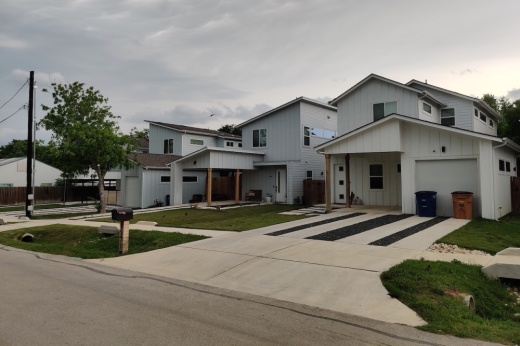Two-minute impact
Today, residential owners in Austin can split up their property to facilitate new development there or prepare to sell off their land. For example, the subdivision of a larger single-family lot could allow for multiple smaller homes to be built instead of a single larger residence.
Like many city development processes, however, even more basic subdivisions often end up taking months to complete while costing property owners thousands of dollars. District 5 Council Member Ryan Alter is bringing a proposal to council's May 4 meeting he hopes will end up easing Austin's “onerous” system for applicants seeking to divide their property—especially given combining land is already much less involved.
“This creates the ability to have a ‘neighborhood-y’-type product that people can get behind and support,” Alter said. “Why we make it super easy to make a lot really big so you can build a really big home, but we make it really difficult to subdivide a lot so you can make a couple more affordable homes? That just doesn’t make sense to me.”
The details
The resolution from Alter would jump-start edits to Austin's land code aimed at simplifying infill development on smaller parcels in residential areas. Alter said the changes could affect existing neighborhoods with historically larger lots as well as parts of town that have not yet been heavily developed.
Under his proposal, the streamlined subdivision process would only apply to properties that are 1 acre or smaller and would result in a maximum of six lots on any given site; larger subdivision proposals would still go through more intensive reviews. City staff would also be directed to come up with “residential improvement areas” where Alter said the proposed changes could end up being most useful and appropriate.
“There are tools available that allow us to do smaller-scale subdivisions—not some huge, many-acre lot that you turn into 1,000 different lots or even 100 different lots—but on the scale that people think about in a neighborhood or in town, trying to create just a little bit more housing, to make that process simpler, faster, cheaper,” he said.
The resolution also asks the city to consider providing financial assistance based on income for subdivision applicants seeking help with the cost of the process.
Put in perspective
Alter's resolution comes before council months after officials approved a separate item to make missing-middle development more accessible in Austin. In March, council also voted for a proposal from District 4 Council Member Chito Vela aimed at bringing more housing on small lots.
The new measure also lines up with yearsold city goals for local development. Austin's Strategic Housing Blueprint adopted back in 2017 calls for subdivision rules that incentivize a wide range of housing types.
Although smaller homes, townhomes and other infill options are traditionally harder to build in Austin, the city blueprint anticipated a large increase in demand for small-lot and missing-middle housing over the coming decades. A 2016 analysis by Fregonese & Associates projected the number of small-lot single-family homes and townhomes could grow by nearly 83,000 units—a 140% increase—between 2014-40 given the demand for those options.
Cody Carr, a partner at Carr Residential and member of the Austin Infill Coalition, has worked on smaller-scale housing development in the city for years. Carr said the method of subdividing in the city is a challenging one that often deters infill and missing-middle housing projects in Austin, especially given developers like him must move through the same extended process as someone seeking to build a 300-unit apartment complex.
“The length of time it takes to navigate the site plan subdivision process has the largest impact on the viability of these smaller projects and is the reason a lot of them don’t get done,” Carr said.
As members of a project team remain involved for months or years while awaiting the results of a subdivision, Carr estimated easing Austin's platting process could cut down the tens of thousands of dollars in related development costs by half. He also agreed with Alter's assessment that simplifying subdividing would likely mean savings in the city's housing market.
“The process is super important to get right because if it’s highly complex or difficult, it really drives up the costs and incentivizes building a single home. But if the policy changes and the process changes, this definitely would result in more housing and faster,” Carr said.





